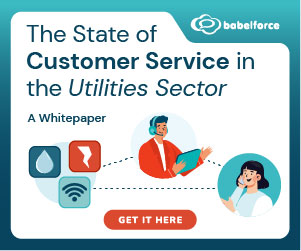SupportZebra breaks down how to successfully transition from an underperforming outsourcing partner to one that truly supports your growth, covering everything from defining objectives and managing risks to aligning expectations and ensuring a smooth handover.
You brought on an outsourcing partner to ease the load, but instead, you’re facing missed deadlines, poor communication, and growing frustration. It’s draining time, trust, and momentum.
Sticking with the wrong provider out of convenience can quietly stall your growth. Delays and dropped tasks accumulate, impacting both your team and your customers.
If you’re spending more time managing your outsourcer than running your business, it might be time for a change. Transitioning to a better-fit partner isn’t just a fix-it’s a step toward regaining focus and moving forward with confidence.
1. Define Clear Objectives and Scope
Before making the move, it’s essential to understand why the change is happening. What’s not working with your current provider? What specific improvements are you aiming for—better service quality, faster turnaround, more flexibility?
Defining your objectives up front ensures that you’re not just reacting to problems, but making a proactive shift that supports your long-term business goals.
This clarity will also help determine which processes or functions should be transitioned and will serve as a foundation for setting expectations with the new partner.
2. Develop a Comprehensive Transition Plan
A smooth transition doesn’t happen by chance, it needs structure. This involves creating a detailed roadmap that encompasses everything from timelines and responsibilities to potential risks and corresponding mitigation strategies.
Breaking the transition into stages, such as planning, knowledge transfer, testing, and go-live, makes the process more manageable.
This roadmap should include clear milestones and contingency plans to address potential disruptions. A well-structured plan helps keep everyone aligned and provides a concrete target to track progress against.
3. Establish a Dedicated Transition Team
Transitions often fail when no one truly owns the process. That’s why forming a dedicated transition team is critical. This team should include internal stakeholders who understand the impacted workflows, as well as representatives from the incoming outsourcing partner.
Their role isn’t just to oversee handovers, it’s to serve as the central point of communication, resolve issues quickly, and make real-time decisions as challenges come up.
Having a focused team keeps things organised and avoids the confusion that comes with too many cooks in the kitchen.
4. Facilitate Effective Communication and Stakeholder Engagement
Communication is what keeps transitions from veering off track. Whether it’s regular sync-ups between internal teams or open dialogues with both the outgoing and incoming providers, transparency is key.
Set up consistent check-ins, use collaboration tools like Trello, Slack, or Microsoft Teams, and ensure that all relevant parties, leadership, front-line employees, and even customers (if needed), are in the loop.
When people feel informed and heard, they’re more likely to stay engaged and cooperative throughout the transition.
5. Conduct Thorough Knowledge Transfer and Training
One of the most delicate stages of a transition is the knowledge transfer. Without it, even the best new partner will stumble.
It’s not enough to send over manuals or process docs, organise live walkthroughs, system demos, and Q&A sessions between your outgoing and incoming vendors.
At the same time, make sure your internal teams receive the necessary training to understand how the new workflows and touchpoints will operate. The goal is to reduce uncertainty and help everyone hit the ground running once the new team is fully in place.
6. Align Expectations and Set Performance Metrics
Transitions often expose gaps in expectations, which can lead to frustration on both sides. To avoid this, take time to align on specific KPIs, service-level agreements (SLAs), and reporting processes with your new provider.
Be clear about what success looks like, whether that’s response times, accuracy, customer satisfaction, or operational efficiency.
Review these metrics regularly, especially in the early months, and use them to guide discussions, not just after something goes wrong, but to improve performance proactively.
7. Manage Risks Proactively
No transition is without risk, but identifying and planning for those risks can keep them from becoming full-blown issues. Look out for issues such as data migration errors, knowledge gaps, timeline delays, or mismatches in work culture.
Build contingency plans into your transition roadmap, such as overlapping providers temporarily or maintaining dual systems until the new partner is fully ramped up.
Ongoing monitoring during each phase of the transition helps you identify issues early and make adjustments before they escalate.
8. Prepare and Communicate with Customers (If Applicable)
If the outsourcing switch has a direct impact on your customers, say, a change in support channels or fulfilment processes, it’s important to keep them in the loop. Proactive communication helps manage expectations and avoid confusion.
A simple heads-up email, FAQ update, or notification on your website can go a long way. Customers appreciate transparency, especially when it’s clear that the change is being made to serve them better.
9. Maintain Governance and Oversight
Even after the transition is complete, your job isn’t done. Ongoing governance is what keeps the new partnership aligned with your goals.
Set up regular check-ins and performance reviews, define escalation paths for issues, and document decision-making protocols.
This structure ensures that both your team and your new outsourcing partner stay accountable and that you have mechanisms in place for continuous improvement.
Start Mapping Out Your Transition Strategy Today.
Switching outsourcing partners isn’t just about replacing one vendor with another, it’s about building a stronger foundation for the future.
With thoughtful planning, open collaboration, and a clear focus on business goals, you can navigate the transition smoothly and emerge with better performance, improved service, and stronger alignment. Transitions are never easy, but done right, they can be the start of something better.
For more information on outsourcing, read these articles next:
- Disadvantages of Outsourcing Call Centres
- Key Factors to Consider for Seasonal Outsourcing
- How to Set up an Outsourced Contact Centre Business
Author: SupportZebra
Reviewed by: Megan Jones
Published On: 18th Jul 2025 - Last modified: 18th Nov 2025
Read more about - Expert Insights, SupportZebra





































